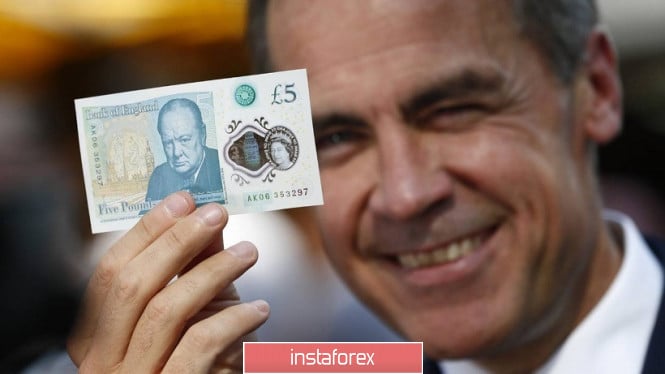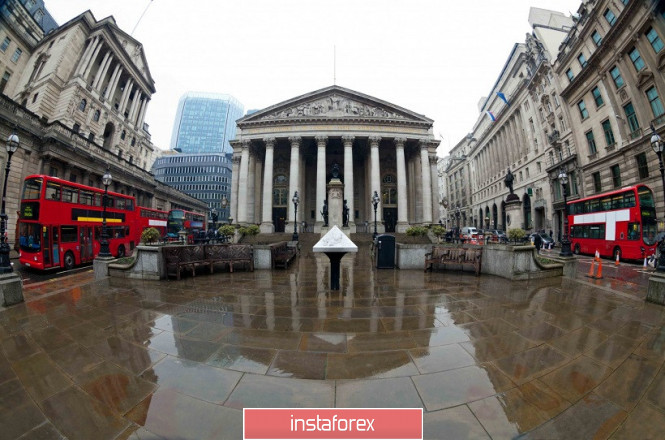The growth of the pound-dollar pair is only due to the US currency's weakness against the background of a temporary Brexit lull, while all other fundamental factors play against the sterling. Looking ahead, it should be mentioned that the upward dynamics of the GBP/USD pair should be treated with extreme caution: over the past month, buyers have repeatedly tried to develop a large-scale correctional movement, but each time they suffered a fiasco. The current situation is no exception, although the dollar has not been under such powerful pressure for a long time.

And yet the pound has its priorities and its benchmarks. This GBP/USD pair is different from the other dollar pairs, where US events have a certain priority. But the British currency is entirely dependent on the prospects of Brexit and often ignores all other fundamental arguments. The Bank of England is also focused on Brexit, who has "tied" the prospects of monetary policy to the prospects of the "divorce process". The English regulator again reminded traders of the importance of this issue at today's meeting.
By and large, the Brekzit factor is the only factor that restrains the members of the English regulator from tightening monetary policy. Judging by how political events unfold in Britain, this "anchor" will hang on the interest rate for a long time. Moreover, the BoE head Mark Carney did not rule out a softening of the parameters of monetary policy, if the UK withdraws from the European Union without any agreement. Given such prospects and Boris Johnson's leading position, it can be assumed that the pound-dollar pair's growth is temporary. This means that traders should consider the expediency of opening short positions for the pair when approaching the first resistance level of 1.2760 (the middle line of the Bollinger Bands indicator on the daily chart).
In general, today, the English regulator left the parameters of monetary policy in its previous form. This is an absolutely expected decision that did not affect the dynamics of the currency pair. However, in its accompanying statement, the regulator identified the risks that have recently increased significantly. Firstly, global trade tensions increased, and secondly, investor fears about the increased likelihood of "chaotic" Brexit increased. In addition, the British regulator acknowledged that the British economy is on the path of stagnation, contrary to the central bank's projections. The April data on economic growth confirm these assumptions. Let me remind you that, according to figures published last week, GDP fell in April further into the negative area (on a monthly basis) - to -0.4% after falling to -0.1% in March. The index of industrial production growth altogether updated two-year lows, falling to the level of -2.7% with a forecast of decline to -0.7%.
As for inflation, the situation is somewhat better. This indicator was released in May at the level of two percent, which corresponds to the central bank's target level. In addition, the regulator noted a positive trend in the labor market. First of all, we are talking about the dynamics of the average earnings component: contrary to negative forecasts, the indicator showed growth (both with and without premiums), while the unemployment rate remained at 3.8%. At the same time, according to the members of the English regulator, by the end of the year, inflation is likely to show a negative trend due to lower energy prices. On the other hand, according to Carney, the current macroeconomic indicators allow the BoE to raise the interest rate - if not for one "but" in the form of political differences between Europe and Britain.

Thus, following the June meeting, the Bank of England again left traders at a crossroads - "one-on-one with Brexit", so to speak. Judging by the rhetoric of Mark Carney, the regulator is ready for diametrically opposite actions, depending on the outcome of the negotiation process between London and Brussels.
Here the original circle of fundamental factors closes, as Europe and Britain, represented by the most likely candidate for the premiership of Johnson, stand at completely different poles of understanding the future prospects of Brexit. This fact sooner or later (but in the foreseeable future) will remind of itself, after which the pound will return to its already familiar state of depression. That is why the GBP/USD pair should be wary of the upward impulse: as soon as the dollar "recovers" (for example, against the positive results of the G20), the pound will not be able to continue to grow only at the expense of its own forces. Moreover, any verbal exchange of correspondence between Johnson and the representatives of Brussels will turn the pair 180 degrees, even despite the "well-being" of the US currency.
In terms of technique, the GBP/USD pair has the potential to grow to the middle line of the Bollinger Bands indicator on the daily chart, which corresponds to a price mark of 1.2760. If the pair overcomes this target (which is unlikely), then the Ichimoku indicator will generate a Golden Cross signal, which will open the way to the next resistance level of 1.2930 (lower Kumo cloud boundary). However, for such a price breakthrough, a corresponding information channel related to the prospects of Brexit is necessary. On one dollar weakness, it will be difficult for GBP/USD buyers to achieve similar price heights.
The material has been provided by InstaForex Company - www.instaforex.com